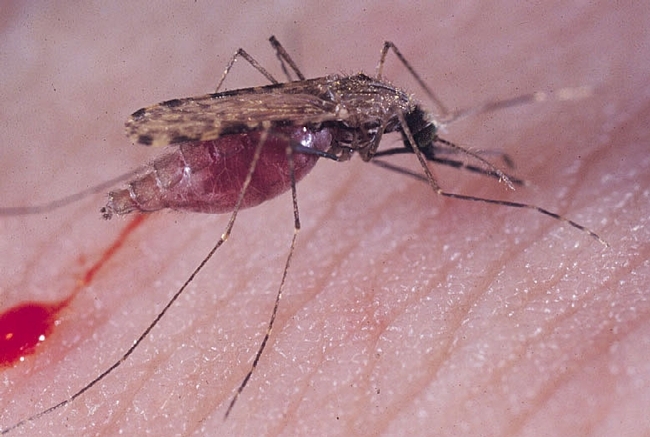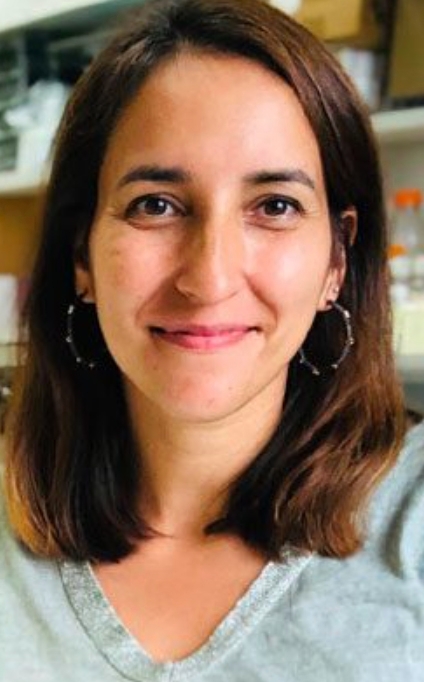- Author: Kathy Keatley Garvey
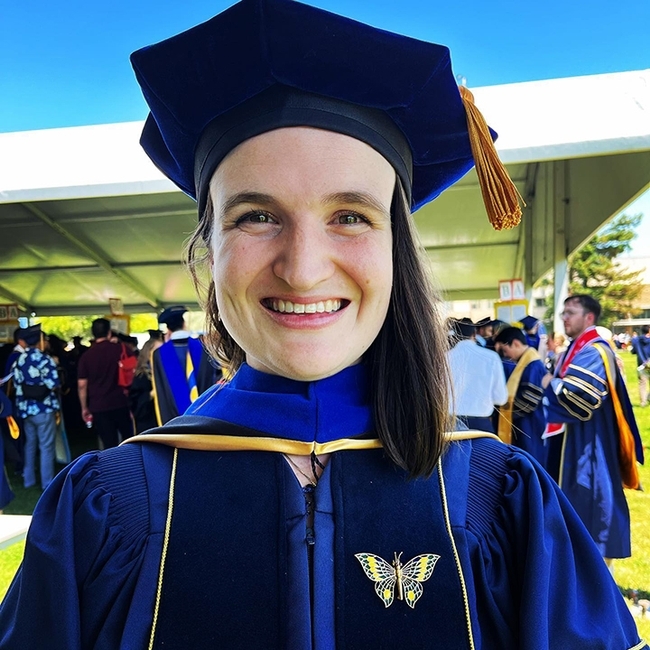
Alberts, a research fellow at the Smithsonian National Museum of Natural History, will present her talk, "Assassin Fly (Diptera: Asilidae) Systematics and Predator Ecology," at 4:10 p.m., Monday, Nov. 13 on Zoom only. The Zoom link:
https://ucdavis.zoom.us/j/95882849672
"Assassin flies (Diptera: Asilidae) are a diverse family that plays an essential ecological role as top aerial and venomous predators," she writes in her abstract. "Little is known about the evolution of their predatory habits. This study provides a novel phylogenetic hypothesis of Asilidae along with prey preference and ancestral state reconstruction in a maximum likelihood framework. This study is based on 176 assassin fly species, 35 Asiloidea outgroup species, 3,400 prey preference records accumulated from literature and museum collections, and approximately 7,913 bp of nuclear DNA from five genes (18S and 28S rDNA, AATS, CAD, and EF-1a protein-encoding DNA) and mitochondrial DNA from one gene (COI)."
"Of the 12 asilid subfamilies included in the analysis the monophyly of six was supported," she continued. "We used ancestral state reconstruction and stochastic character mapping to test whether a polyphagous arthropod predator is the ancestral state for Asilidae. Assassin flies are polyphagous arthropod predators, with specialized arthropod prey preferences evolving 20 independently across the Asilidae phylogeny. I will also summarize my other dissertation chapter, a review of Nearctic Saropogon with a new species description."
Alberts, who does research in systematics, phylogenetics, insect biotechnology, genomics, speciation, and macroevolution, received her doctorate from UC Davis in 2023. She and her husband, George, and their two children are residents of Silver Spring, Md.
A native of Plainfield, N.H, Charlotte is a 2015 graduate of St. Lawrence University, Canton, N.Y., where she majored in conservation biology and developed an interest in assassin flies--and in celebrating World Robber Fly Day every April 30.
Why assassin flies? “I chose assassin flies because I fell in love researching them as an undergraduate at St. Lawrence University,” she said. "They are fascinating flies and I like that they can immediately change someone's perspective of flies. They are venomous, predatory flies that eat other insects! And they sometimes even look exactly like the creatures they eat. Example: bumble bees!”
Seminar coordinator is Brian Johnson, associate professor, UC Davis Department of Entomology and Nematology. For Zoom technical issues, he may be reached at brnjohnson@ucdavis.edu. The list of seminars is posted here.
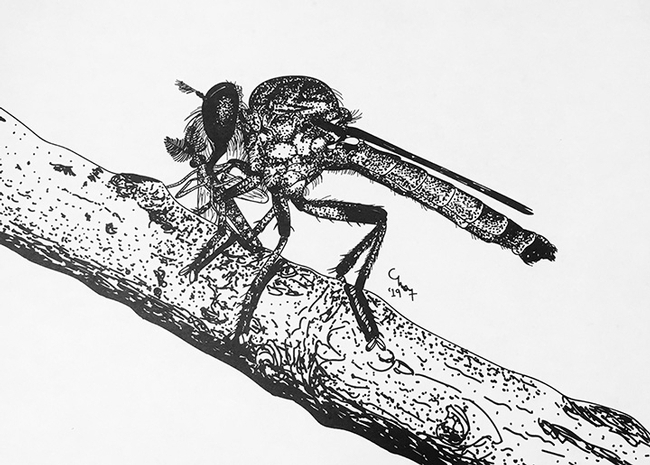
- Author: Kathy Keatley Garvey
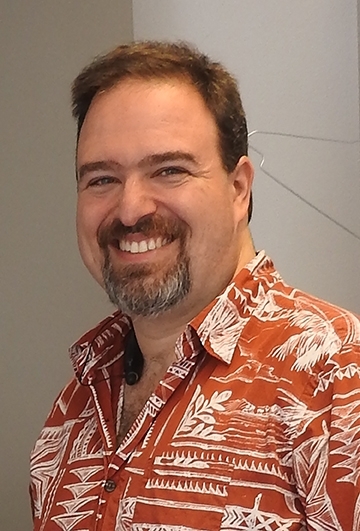
Attardo will discuss “The Mating Biology of Tsetse Flies--Insights into the Morphological, Biochemical, and Molecular Responses to Mating Stimuli in a Viviparous Disease Vector.”
"Research into the reproductive behavior of tsetse flies offers key insights into controlling diseases like African sleeping sickness," he writes in his abstract. "Unique among insects, these flies give birth to live offspring. During mating, males transfer a mix of sperm and other vital substances to the females. This study employs state-of-the-art techniques, including 3D scanning and genetic analysis, to monitor changes in the female fly's reproductive system over a 72-hour period post-mating. Findings indicate that mating sets off a chain of intricate changes in the female, affecting everything from biochemistry to gene activity. These changes prepare her for pregnancy and childbirth. The study opens up new avenues for understanding tsetse fly biology and offers potential strategies for disease control."
The seminar also will be on Zoom. The link:
https://ucdavis.zoom.us/j/95882 849672
The Attardo lab monitors the dynamics of vector insects at the levels of physiology, population genetics and environmental interactions.
Attardo is a global expert on vectorborne diseases, including his groundbreaking work on tsetse flies. He researches the invasive yellow mosquito, Aedes aegypti, which can carry such diseases as dengue, chikungunya, Zika and yellow fever. His work involves predicting insecticide resistance and tracking movements of genetically independent populations of aegypti throughout the state.
Attardo, who holds a doctorate in genetics from Michigan State University, where he researched the molecular biology of mosquito reproduction, joined the UC Davis Department of Entomology and Nematology in 2017 from the Yale School of Public Health's Department of Epidemiology of Microbial Diseases.
He received the 2022 Medical, Urban, and Veterinary Entomology Award from the Pacific Branch, Entomological Society of America, which encompasses 11 Western states, plus parts of Canada and Mexico, and U.S. territories.
For any technical issues regarding Zoom, contact seminar coordinator Brian Johnson at brnjohnson@ucdavis.edu.
Resources:
- Tsetse Fly Research (article featuring Geoffrey Attardo, Feb. 3, 2021, UC Davis Department of Entomology and Nematology
- A Tsetse Fly Births One Enormous Milk-Fed Baby, Deep Look, featurng the work of Geoffrey Attardo
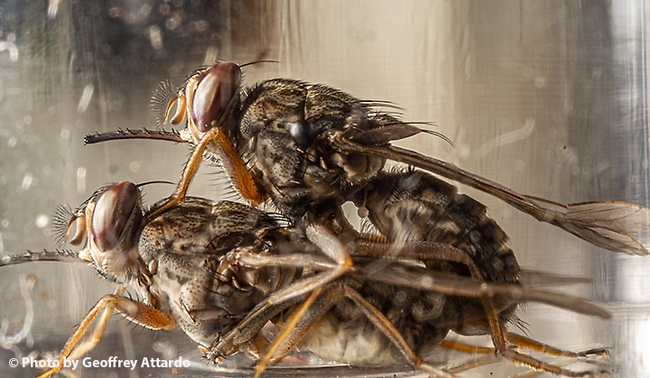
- Author: Kathy Keatley Garvey
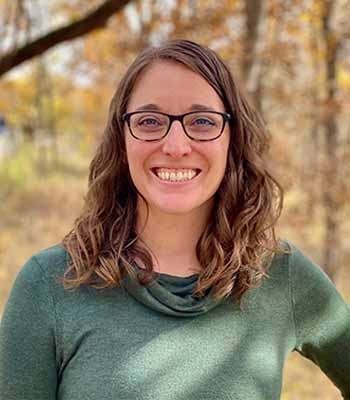
She will speak at 4:10 p.m. in 122 Briggs Hall. Her seminar also will be virtual. The Zoom link: https://ucdavis.zoom.us/j/95882849672.
"Parasites often manipulate their hosts' behavior and physiology, resulting in detrimental effects on host fitness," Worthington says in her abstract. "The horsehair worm (Paragordius varius) is a long-lived parasite that infects arthropods, including the sand field cricket, Gryllus firmus. This parasite lives inside its host for upwards of 28 days and can grow as long as 30 cm, presenting a significant challenge for its host's own growth, survival, and reproduction."
"Here, we tested the ability of infected male crickets to invest in immunity, somatic growth, and reproductive structures," she noted. "We also compared courtship behaviors, calling abilities, and mating success rates between infected and healthy males to identify how host reproductive fitness is affected by this large, long-lived parasite. Our results demonstrate surprisingly few physiological trade-offs, yet preliminary research suggests a reproductive burden on infected males, where even when host male crickets are able to survive horsehair worm infection, they will likely suffer from significantly reduced lifetime reproductive fitness."
Seminar host is doctoral candidate Lindsey Mack of the laboratory of medical entomologist-geneticist Geoffrey Attardo. "Dr. Worthington was my undergraduate research advisor," said Mack, adding. "She studies reproduction/immune trade-offs in crickets. Currently, her work focuses on the reproductive costs of high parasitic loads in field crickets, but she has experience with stalk=eyed flies, rhinoceros beetles, horsehair worms, and many other organisms. Generally, she is interested in wild sexually selected morphologies and behaviors."
"Additionally, she teaches at a religiously affiliated, primarily undergraduate institution (Creighton is a private Jesuit research university) and would be a great person to talk to about this type of career," Mack said. A pre-seminar coffee takes place from 3:30 to 4:10 p.m. in 158 Briggs.
Worthington, who joined Creighton's Department of Biology in the fall of 2016, holds a bachelor's degree in biology from the University of South Dakota (USD), and also received her master's degree at USD, studying the anti-predator behaviors of stalk-eyed flies and managing a long-term project dedicated to conserving the federally endangered Hine's Emerald dragonfly.
Worthington completed her doctorate in ecology and evolutionary biology at Iowa State University, researching mating behavior in field crickets. She then transitioned into a postdoctoral fellowship at Washington State University where she worked on the development of sexually selected weapons in rhinoceros beetles and the hormonal mechanisms mediating wing polymorphism in crickets.
"Broadly, I am fascinated by bizarre morphologies and behaviors that are the result of sexual selection," Worthington says on her website. "Specifically, I am interested in the functional and physiological costs of these traits. I focus on trade-offs between reproduction and immunity, but also investigate topics such as sperm competition, the benefits of polyandry, and the molecular/hormonal mechanisms responsible for life-history tradeoffs. I have worked with a diverse array of invertebrate taxa (stalk-eyed flies, jumping spiders, dragonflies, crayfish, snails, and rhinoceros beetles), but currently focus my research on Gryllus firmus crickets. One particular interest is how individuals respond to long-term parasitic infections by the horsehair worm Paragordius varius, and how this infection impacts life-long fitness in its host."
The UC Davis Department of Entomology and Nematology's winter seminars are held on Wednesdays at 4:10 p.m. in 122 Briggs Hall. All are virtual. Urban landscape entomologist Emily Meineke, assistant professor, coordinates the seminars. (See schedule.) She may be reached at ekmeineke@ucdavis.edu for technical issues.
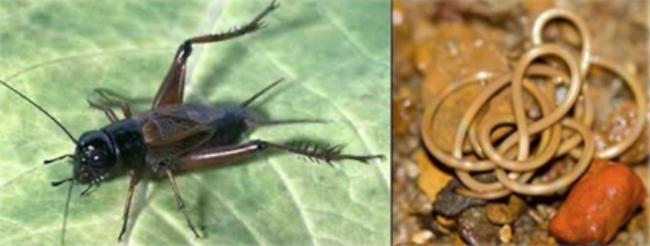
- Author: Kathy Keatley Garvey
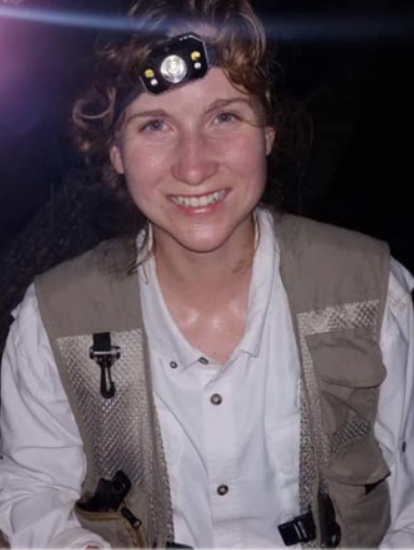
Her seminar also will be virtual. The Zoom link is https://ucdavis.zoom.us/j/95882849672. A coffee social will take place in 158 Briggs from 3:30 to 4:10 p.m.
Chamberland is a member of the laboratory of Jason Bond, associate dean, UC Davis College of Agricultural and Natural Resources, and professor and the Evert and Marion Schlinger Endowed Chair, UC Davis Department of Entomology and Nematology.
“Net-casting spiders (Deinopidae) comprise three genera with enigmatic evolutionary histories. Deinopisand Asianopis, the ogre-faced spiders, are best known for their giant light-capturing posterior median eyes (PME), whereas Menneus does not have enlarged PMEs,” Chamberland says in her abstract. “Molecular phylogenetic studies have revealed discordance between morphology and molecular data. We employed a character-rich, ultra-conserved element (UCE) dataset and a taxon-rich cytochrome oxidase I (COI) dataset to reconstruct a genus-level phylogeny of Deinopidae, aiming to investigate the group's historical biogeography, and examine PME size evolution. Although the phylogenetic results support the monophyly of Menneus and the single reduction of PME size in deinopids, these data also show that Deinopis is not monophyletic. Deinopid biogeographic history reflects the separation of Western Gondwana as well as long-distance dispersal events.”
Chamberland, who studies the evolution and biogeography of spiders, joined the Bond lab in 2021. She holds a doctorate in biology (2020) from the University of Vermont, Burlington, where she studied with Ingi Agnarsson. Her dissertation: "From Gondwana to GAARlandia: Molecular Phylogenetics and Historical Biogeography of Spiders." She received her bachelor's degree in biology and anthropology in 2013 from the University of Vermont.
“As an undergraduate at the University of Vermont, I was introduced to deinopids, the ogre-faced spiders, and it was love at first sight,” Chamberland related. “With a wide range of dispersal propensities and diverse hunting strategies, spiders have been a rich source for me to explore biogeographic and evolutionary questions. I would like to continue my work with historical biogeography and spiders after my postdoc and help foster the upcoming generation of arachnologists. I enjoy teaching, especially through the lens of phylogenetics and systematics, and I am working towards finding a teaching career where I can teach, mentor, and continue to ask evolutionary questions.”
Chamberland is the lead author of “Biogeography and Eye Evolution of the Ogre-faced Spiders," published Oct. 22, 2022 in Scientific Reports and co-authored by Ingi Agnarsson, Iris Quayle, Tess Ruddy, James Starrett and Jason Bond.
Chamberland and Bond co-hosted the 2022 American Arachnological Society Summer Symposium at UC Davis and she also delivered a research presentation at the symposium. At both UC Davis and at the University of Vermont, she has led and taught lab and field techniques, molecular methods and data analyses, and arachnology to high school, undergraduate, and graduate students, resulting in publications on systematics, evolution, and biogeography of spiders.
She earlier served as the invertebrate collections manager at the Zadock Thompson Zoological Collections (2020-2021), University of Vermont.
The department seminars, coordinated by urban landscape entomologist Emily Meineke, assistant professor, are held on Wednesdays through March 15. (See schedule.) Eight of the 10 will be in-person in 122 Briggs Hall, and all will be virtual.
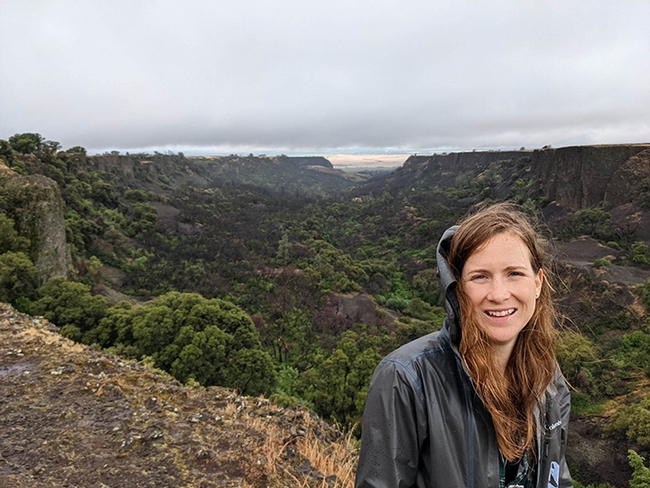
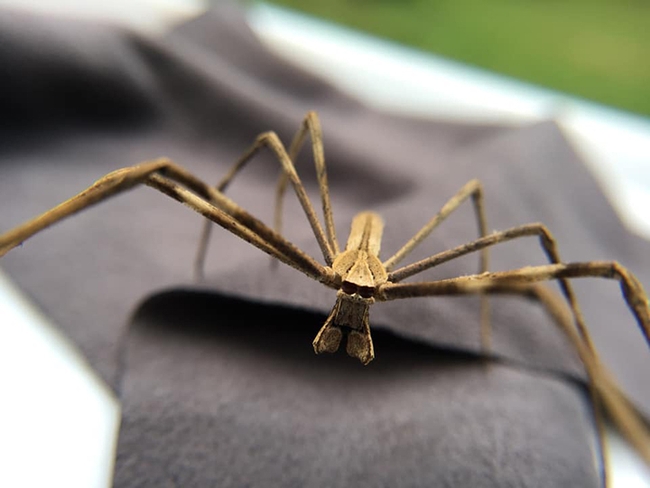
- Author: Kathy Keatley Garvey
Filipa Rijo-Ferreira, a UC Berkeley School of Public Health (BPH) assistant professor who specializes in parasitology and circadian rhythms, will present a UC Davis Department of Entomology and Nematology seminar at 4:10 p.m., Wednesday, Oct. 19 on "Circadian Rhythms in Parasitic Diseases" in 122 Briggs Hall.
Her seminar also will be virtual. The Zoom link is https://ucdavis.zoom.us/j/95882849672. Host is molecular geneticist and physiologist Joanna Chiu, professor and vice chair of the UC Davis Department of Entomology and Nematology.
"Malaria's main symptom is the periodic fevers experienced by patients, fevers that ‘come and go' at certain times of the day and are a consequence of synchronized parasite rhythms," Rijo-Ferreira says in her abstract. "In humans, circadian clocks regulate multiple aspects of physiology, including sleep-wake cycles, metabolism, and immune defense. Circadian biology leads to body rhythms experienced by the pathogens that infect humans. In addition to sensing host rhythms, we recently discovered that parasites which cause devastating health burdens such as malaria and sleeping sickness diseases also have their own intrinsic clocks. The clocks of parasites regulate core biological functions from metabolism to the cell cycle, and the discovery of the existence of their clocks serves as an opportunity to access the molecular mechanisms regulating their rhythmic biology."
Rijo-Ferreira, trained in infectious diseases and neuroscience, joined the UC Berkeley faculty in January 2022. A native of Lisbon, Portugal, she holds a bachelor's degree in molecular and cellular biology from Nova University of Lisbon, and her master's degree in 2009 in molecular genetics and biomedicine from Imperial College, London. She received her doctorate in 2016 at the University of Porto, Portugal, where she completed her studies in basic and applied biology, molecular parasitology, and neuroscience. Postdoctoral training followed at the University of Texas Southwestern Medical Center, Dallas.
"Our lab is interested in parasitic infections and we study them under the lenses of time of day," she wrote on her lab website. "Our rhythmic world has been a driving force for organisms to evolve a molecular clock to anticipate such daily rhythms. Similarly, our own circadian biology leads to physiological rhythms that parasites experience.We study the single-celled parasites Plasmodium spp. that causes malaria, and Trypanosoma brucei that causes sleeping sickness. We employ technical approaches spanning from next-generation sequencing, to cellular and behavioral assays to investigate the interactions of these parasites with their hosts.Our work seeks to understand how circadian rhythms modulate host-parasite-vector interactions and identify opportunities in their rhythmic biology to treat parasitic infections
In an interview with BPH staff writer Eliza Partika, published in February 2022, she commented: "I am fascinated about our day and night cycles and how organisms evolved to anticipate them. I find it incredible that parasites, such as the ones that cause malaria, show a coordinated rhythmic pattern themselves, which underlies periodic fevers in infected individuals. Our research is aimed at understanding how this phenomenon is regulated molecularly, and how we can disrupt these rhythmic patterns to offset the infection."
"At BPH, we aim to set up a framework where we can explore the relationships between parasites, hosts, and the mosquitoes that serve as the vector of disease transmission, based on the time of day," Rijo-Ferreira related. "We hypothesize that the circadian rhythms of these three organisms need to be aligned in order for the parasite to cause an efficient infection. In fact, when rhythms are misaligned, there is a reduction in parasite levels. Thus, identifying the molecular players from host, parasite, and mosquito is essential to understanding this phenomenon and creating alternative strategies to manage deadly infections like malaria and sleeping sickness."
Rijo-Ferreira said she seeks to "bring to the attention the circadian aspect of infectious diseases and bring awareness of the potential benefits of time of day vaccination and drug treatment."
Emily Meineke, assistant professor of urban landscape entomology, UC Davis Department of Entomology and Nematology, coordinates the department's seminars for the 2022-23 academic year. All 11 seminars will take place both person and virtually at 4:10 p.m. on Wednesdays in Room 122 of Briggs Hall except for the Nov. 9th and Dec. 7th seminars, which will be virtual only, she said. (See list of seminars)
For further information on the seminars or to resolve any technical difficulties with Zoom, contact Meineke at ekmeineke@ucdavis.edu.
